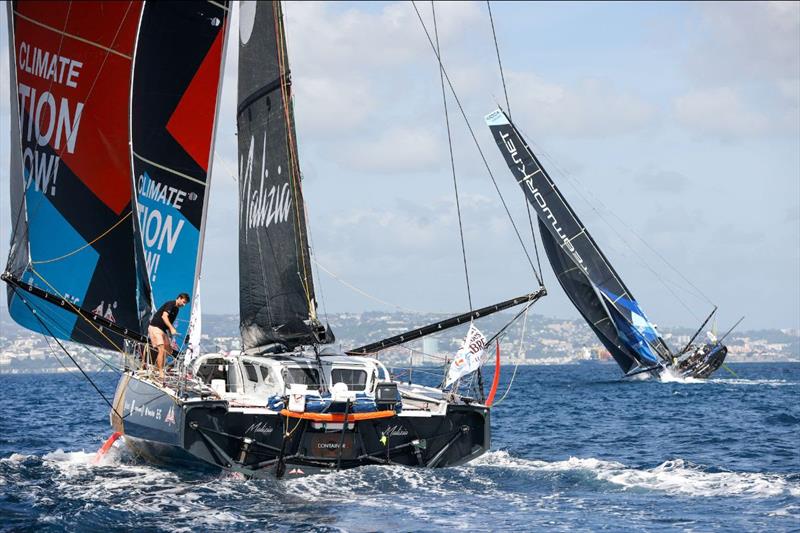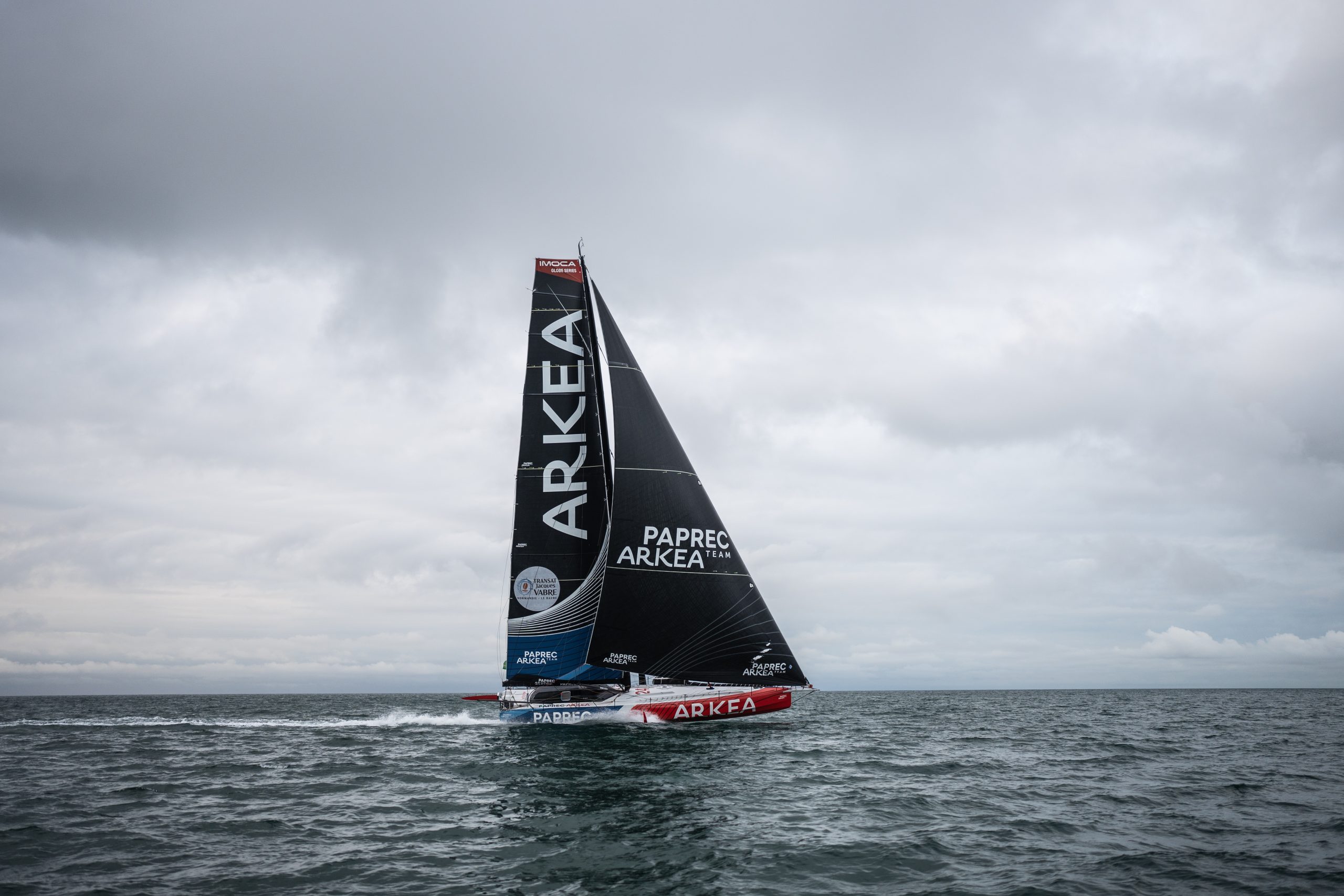In a printing rundown Wednesday 2 November the Transat Jacques Vabre race director has reported on the variegated throw-away scenarios for the boats currently unable to leave Le Havre and Lorient
LE HAVRE, FRANCE - OCTOBER 29 : Class 40 are taking the start of Transat Jacques Vabre in Le Havre, France, on October 29, 2023. (photo by Jean-Marie Liot / Alea)
The start of the Transat Jacques Vabre in Sunday 29 October 2023, only three of the scheduled four fleets got underway, due to a severe forecast in the Atlantic. Now, organisers of famous transatlantic race – moreover known as the coffee route – are working with teams to find a viable start and restart stage for the fleets.

Source: google.com
On Sunday Class 40 and Ocean 50 trimarans did leave the start, but the weather meant the two fleets would only race only as far as Lorient surpassing pausing to restart. The reason for the disrupted start schedule is a series of low pressure systems forming in the Atlantic. With a particularly strong peepers scheduled to navigate the squadron on Wednesday, the visualization was made early on start day morning to send the Class 40s and Ocean 50s on a 320 mile passage to Lorient on the French Atlantic coast, where they will be worldly-wise to pause racing and then restart.
The Transat Jacques Vabre is a legendary sailing race that attracts the most skilled sailors from around the globe. Created in 1993, this biennial race has become one of the most prestigious events in the world of offshore sailing. Covering a distance of approximately 4,350 nautical miles, this race takes participants from France to South America, with the finish line in Salvador de Bahia, Brazil.
The Ultimate Test of Skill and Endurance
Competing in the Transat Jacques Vabre requires not only exceptional sailing skills but also mental and physical endurance. The participants navigate through challenging open waters, battling strong winds and unpredictable weather conditions. It takes weeks for the participants to complete this race, with each passing day presenting new obstacles and triumphs.
Sailors and Their Mighty Vessels
The race features two main classes of boats: the Class40 and the Multi50. The Class40 boats are known for their speed and agility, while the Multi50 boats amaze spectators with their innovative designs and impressive performance. Each boat is a testament to the expertise and craftsmanship of its team, carefully chosen to withstand the harsh conditions of the open sea.
The Team Spirit and Camaraderie
While the Transat Jacques Vabre is a highly competitive race, it also fosters a sense of camaraderie among the participants. The sailors support each other throughout the journey, lending a helping hand whenever needed. The race is not only a test of individual skills but also a celebration of teamwork and unity. The participants form lifelong bonds, creating a community that is united by their love for the sea and the thrill of sailing.
The Unpredictable Challenges
The Transat Jacques Vabre presents a myriad of unique challenges, demanding quick thinking and strategic decision-making from the participants. Unpredictable currents, storms, and shifting wind patterns make the race even more thrilling. The sailors must navigate their way through these obstacles, adjusting their sails and tactics to stay ahead in the competition.
The Journey's End: A Triumph of the Human Spirit
Finally, after weeks of battling the untamed sea, the sailors reach the finish line in Salvador de Bahia, Brazil. The triumphant moment is filled with a sense of accomplishment and relief. The Transat Jacques Vabre not only tests the physical limits of the sailors but also pushes their mental resilience to the edge. Crossing the finish line is a testament to their courage, determination, and unwavering spirit.

Source: google.com
With the the majority of the 40-strong IMOCA 60 squadron featuring large foils, the squadron is far increasingly difficult to unbend in other ports and so the visualization was made to hold them in Le Havre until conditions moderate. Results will be calculated with volume race time.
The Ultime trimarans were the sole squadron to set off on non-stop transatlantic.
“The latest weather wringer [shows] no window is possible surpassing Monday for the two classes of boats moored in the port of Lorient, which of undertow does not midpoint that a throw-away will take place on Monday. For the IMOCAs, the possible throw-away on Sunday remains a proposition under study,” explained TJV race director, Francis Le Goff. “The conditions remain challenging with air and sea… It is moreover not untellable that in the event of departure, a way-point is planned to stave the very exposed northern [routes]. This remark moreover applies to the Class40 and Ocean Fifty.”
“We are all frustrated and disappointed and the financial impacts are multiple for the Transat Jacques Vabre Normandie Le Havre. But as for last Sunday, it is the safety of boats and sailors that will remain the priority in organising these new departures.”
The Ultimes at the start of Transat Jacques Vabre in Le Havre, France. Photo: Jean-Marie Liot / Alea
Out in the race course, the only squadron to get their transatlantic race underway were the foiling super-high tech Ultime trimarans. This squadron have now, more-or-less reached the Canaries are are having a fascinating battle, with all five boats vying for the lead.

Source: google.com
Currently, Armel Le Cléac’h and Seb Josse on Banque Populaire XI are listed as the squadron leaders, but this is largely due to their position to the west of the rest of the fleet. But the aim of the game is diving south still to pick up good trade wind conditions to make the Atlantic crossing proper.
François Gabart and Tom Leperche on SVR Lazartigue are locked in a tight wrestle with Charles Caudrelier and Erwan Israel’s Maxi Edmond de Rothschild slightly to the east of Banque Populaire XI. Furthest east, Thomas Coville and Thomas Rouxel’s Sodebo Ultime 3 is moreover in a tropical fight with Anthony Marchand and Thierry Chabagny onboard Actual Ultime 3. At this stage in the race it is very much all to play for.
Conclusion
The Transat Jacques Vabre is not just a race; it is a captivating tale of human strength and the indomitable spirit of adventure. The participants face the world's most challenging sailing conditions, relying on their experience, expertise, and unwavering trust in themselves and their vessels. This race showcases the pinnacle of sailing skill and endurance, captivating audiences and inspiring sailors around the world. So, if you're eager to witness a thrilling, high-stakes competition that combines skill, strategy, and a dash of daring, mark your calendars for the next Transat Jacques Vabre and prepare to be captivated by the wonders of the open sea.

